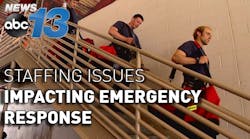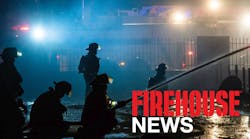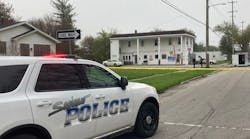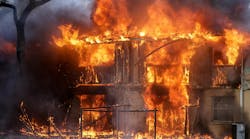Fighting fires and conducting searches in high-rise buildings are done more efficiently when there are five or six people on the crew.
Those were among results of a NIST study announced Wednesday to people attending the annual Metro Fire Chiefs Conference in Phoenix.
“It’s not simply that larger crews have more people. Larger crews are deployed differently and, as a result, are able to perform required tasks more quickly,” said NIST Fire Protection Engineer Jason Averill, who headed the study.
"First and foremost, this study is about firefighter safety," said IAFF Assistant to General President Lori Moore-Merrell.
Averill noted: “An analysis of 14 “critical tasks”—those undertaken when potential risks to building occupants and firefighters are greatest—found that three-member crews took almost 12 minutes longer than crews of four; 21 minutes longer than crews of five, and 23 minutes longer than crews of six to complete all tasks. Four-person crews took nine minutes and 11 minutes longer than five- and six-member crews, respectively..."
Firefighters from several area departments in Virginia and Maryland participated in the FIRE Act grant-funded project conducted at a vacant 13-story building in Crystal City, Va.
Using an elevator to the floor enabled crews to begin their tasks two to four minutes earlier than those who hiked up the stairs, Averill pointed out.
Dennis Compton, chair of the National Fallen Firefighters Foundation, praised the study.
"If we allow them to be built, we need a fire department that is appropriately staffed, trained equipped and deployed..."
Further, Compton urged chiefs to use the NIST research as a roadmap when discussing fire service needs with elected officials.
Averill said the project involved 48 separate controlled experiments, plus 48 corresponding computer-modeling simulations, which evaluated three types of representative fires, from slow to fast growing.
“On the basis of the results of computer modeling, which incorporate data from live experimental burns, the study team concluded that smaller crews end up facing larger fires because of the additional time required to complete tasks…”
Moore-Merrell said: “Prior to this experiment, some fire departments attempted to deploy with smaller crews on each piece of apparatus. The logic suggested that, if the fire is big enough, just send more units, but it ignores the fact that larger crews have tactical advantages that reduce risk exposure to people and firefighters. Crews of six and even five can carry out crucial tasks in parallel rather than in series. Saving time can save occupant lives and prevent firefighter injuries and property damage…”
More info including a video can be viewed here.





